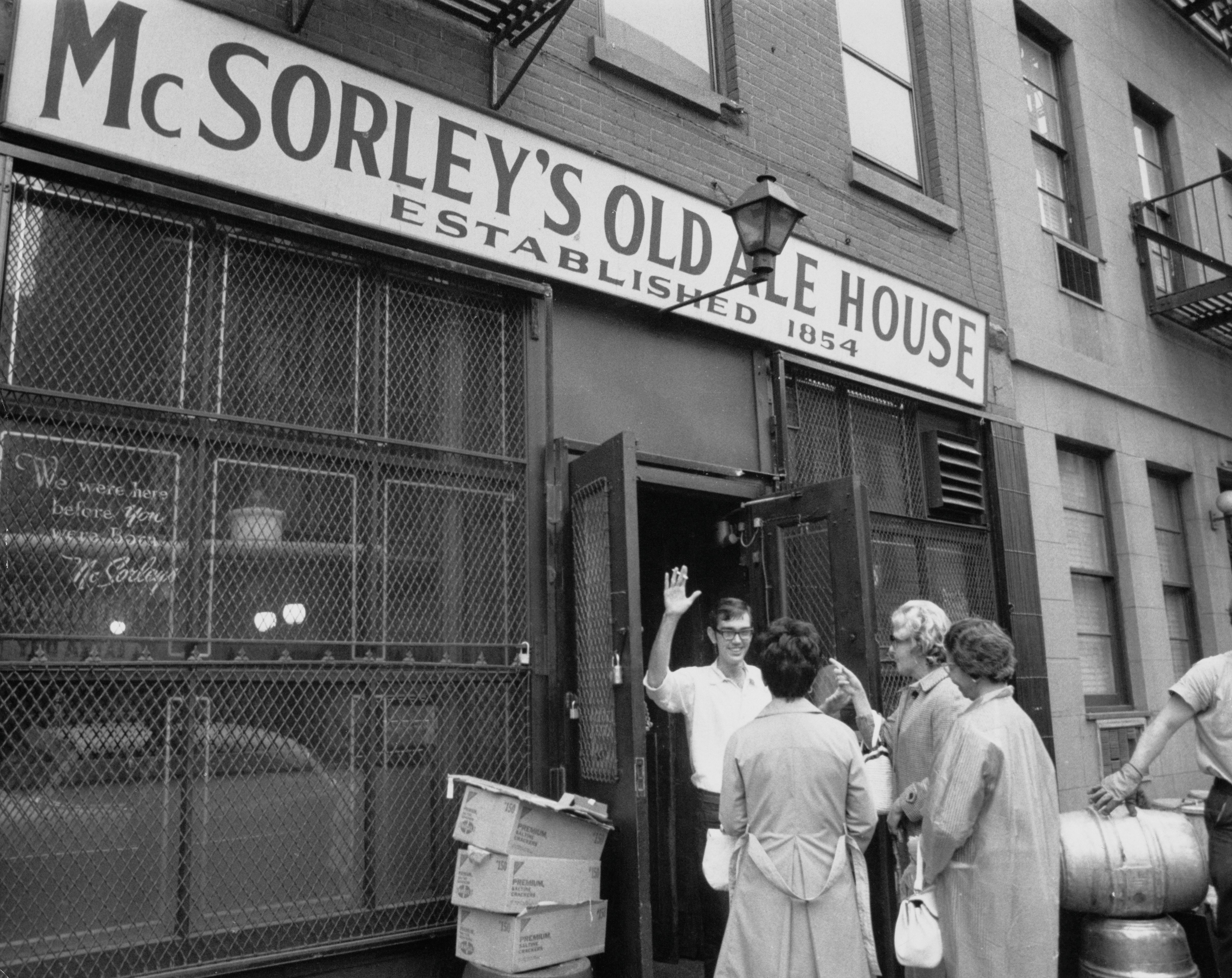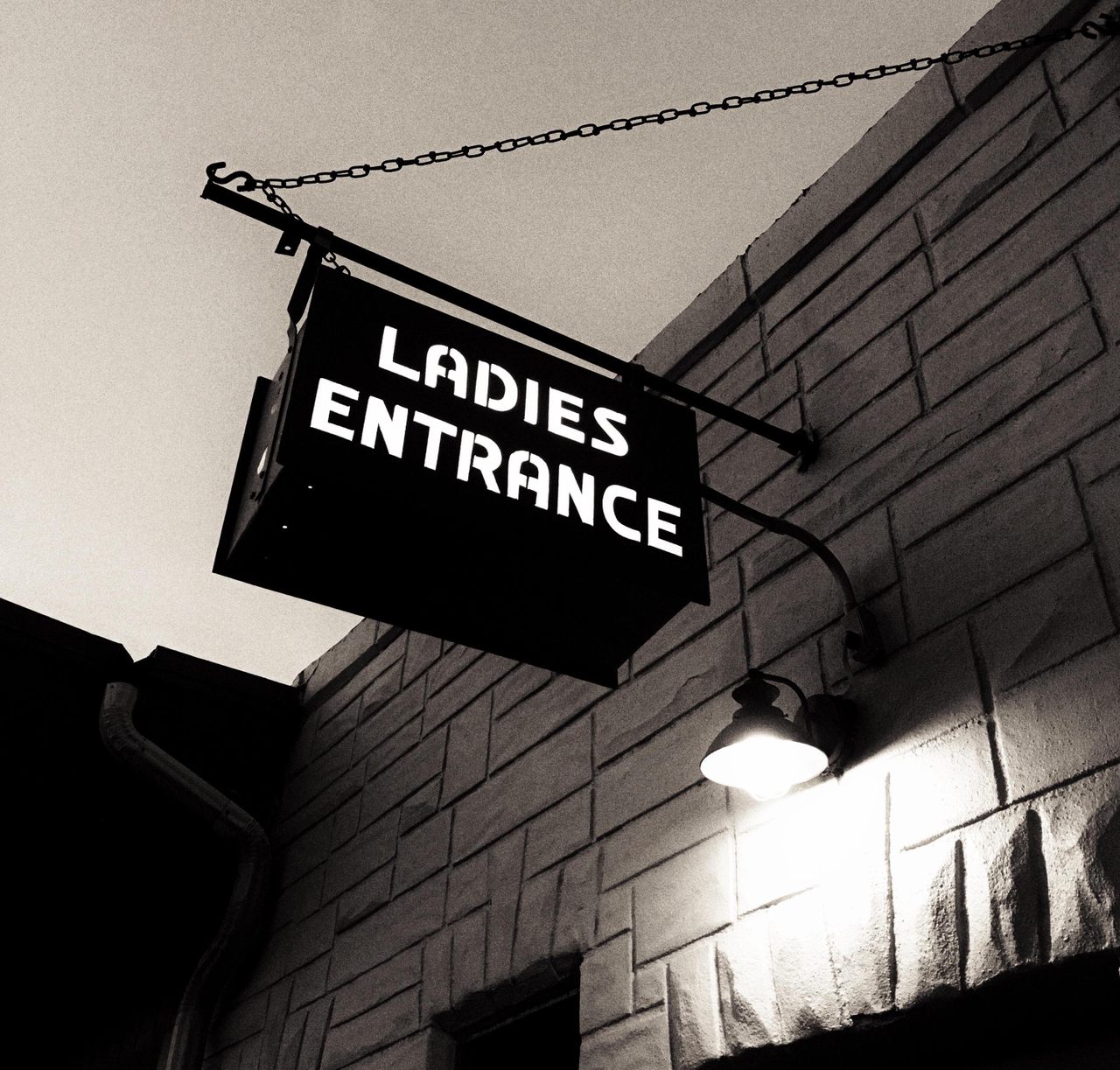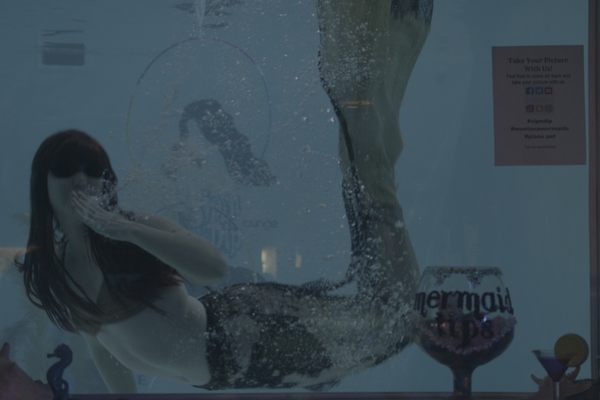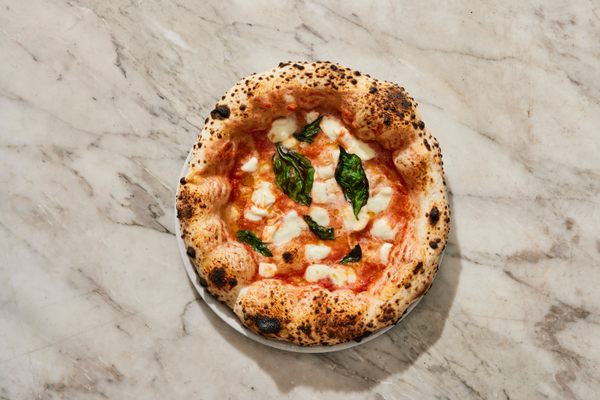The Feminist History Behind the Ladies’ Entrance
There’s a story behind these hidden pub snugs and saloon doors.
THIS ARTICLE IS ADAPTED FROM THE MARCH 11, 2023, EDITION OF GASTRO OBSCURA’S FAVORITE THINGS NEWSLETTER. YOU CAN SIGN UP HERE.
In the 1970s, Shirley MacLaine strode up to the bar at Farrell’s Bar & Grill in Windsor Terrace, Brooklyn, and demanded a drink. The other patrons paused to stare—not so much because she was a famous actress, but because she was a woman. From 1933 up until that point, the bar had a strict policy against “unchaperoned ladies.”
That’s not to say women weren’t allowed in the bar at all. “It used to be that they would serve women, but they had to sit in the back and the men had to order their drinks,” says cocktail historian Amanda Schuster. MacLaine, who was there with journalist Pete Hamill, would have none of it.
“Shirley was like, ‘Hey, Pete, what do you want?’” Schuster says. “And everybody was just kind of watching her, slack-jawed. And from then on, they allowed women.”
Bars may be societal watering holes, but they have rather famously not always been for everyone. Public spaces are often inherently political and, for much of history, there were strict social rules—or even laws—about where women were and were not welcome.
Some bars also still carry physical markers of times when women weren’t allowed. In honor of Women’s History Month, Gastro Obscura would like to encourage you to visit the secretive rooms, side entrances, and formerly men-only bars where women can now drink freely.
Snugs

For much of the 19th century in the United Kingdom, the local pub was no place for a well-to-do lady. Yet Victorian women, even those in the middle and upper classes still found ways to frequent them. In order to keep women away from prying eyes—particularly if they happened to be somebody’s mistress—pubs installed small, often well-decorated private rooms known as snugs attached to the rest of the bar.
Snugs weren’t just for women, of course. Plenty of people, from politicians holding clandestine meetings to local vicars, had reasons for wanting to drink a pint without an audience. For women, however, snugs offered a reprieve from social judgment and constraints. And while some female patrons visited a snug with a male suitor, others went just to have a moment of peace with other women.
Pubs across the U.K. and Ireland may be very much co-ed affairs these days, but many of the historic ones have kept their old snugs. Today, it’s still possible to enjoy an ale in a space that once offered social refuge.
Ladies’ Entrances
Across the pond in the U.S., patrons in bars from Madison, Wisconsin, to Philadelphia may notice the occasional “Ladies’ Entrance” signs hanging over side doors leading to backrooms. These were once the only ways for women to slide in with less public observation.
Plenty of American men of the mid-1800s to early 1900s saw the local bar or saloon as the place to get away from their spouses. Leading up to Prohibition, “there was a proliferation of these gentlemen-only clubs,” Schuster says. Many of these establishments would be associated with a particular type of activity, be it cards or cigars.
In other words, where, and with whom a woman could drink became more tightly controlled. It didn’t help that across much of the United States around the turn of the 20th century, moral panic still reigned. Unaccompanied women were liable to be seen as loose, and bars where genders fraternized freely became associated with a kind of societal decay.
In some cases, women who broke the rules faced more than just social stigma. As Sascha Cohen writes in JSTOR Daily, police departments in Los Angeles, Portland, and Atlanta, among other cities, targeted, surveilled, and criminalized women who appeared in drinking establishments without a chaperone around the turn of the 20th century. In short, they prosecuted those who refused to play by the rules—to enter through the back door or sit where they were told to.
Surprisingly Recent History

So how did all this change?
Prohibition shook up a lot of things in American drinking culture, including some of the gender segregation. After all, if bootleggers and their customers were already breaking the law, there wasn’t much point in worrying about respectability.
But after World War II, a number of American bars stubbornly remained boys’ clubs. “In New York, you had these places that very famously did not let women in. They were well known for it,” Schuster says.
In 1969, Betty Friedan stormed into a men-only lunch service at the Oak Room in New York’s Plaza Hotel, flanked by more than a dozen angry feminists. “This is the only kind of discrimination that’s considered moral—or, if you will, a joke,” she told Time magazine, which declared that the action “shook the very foundations of the fortress.”
In 1970, a New York City ordinance forced bars to cease this form of gender-based discrimination. Barbara Shaum, a resident of the East Village, became the first woman to walk into McSorley’s Old Ale House, which had been strictly male-only since it opened in 1854.
Even as late as 1982, a British bar called El Vino prohibited women from standing at the bar, supposedly as a form of “chivalry.” When two women journalists violated the rules, the owners barred them for life. It took a court case to overturn the decision.
Being allowed to order a drink might seem like a small thing, but visibility matters, as does the right to move unimpeded through a space. It’s worth remembering the women who spoke up to make that happen.
Gastro Obscura covers the world’s most wondrous food and drink.
Sign up for our regular newsletter.



















Follow us on Twitter to get the latest on the world's hidden wonders.
Like us on Facebook to get the latest on the world's hidden wonders.
Follow us on Twitter Like us on Facebook